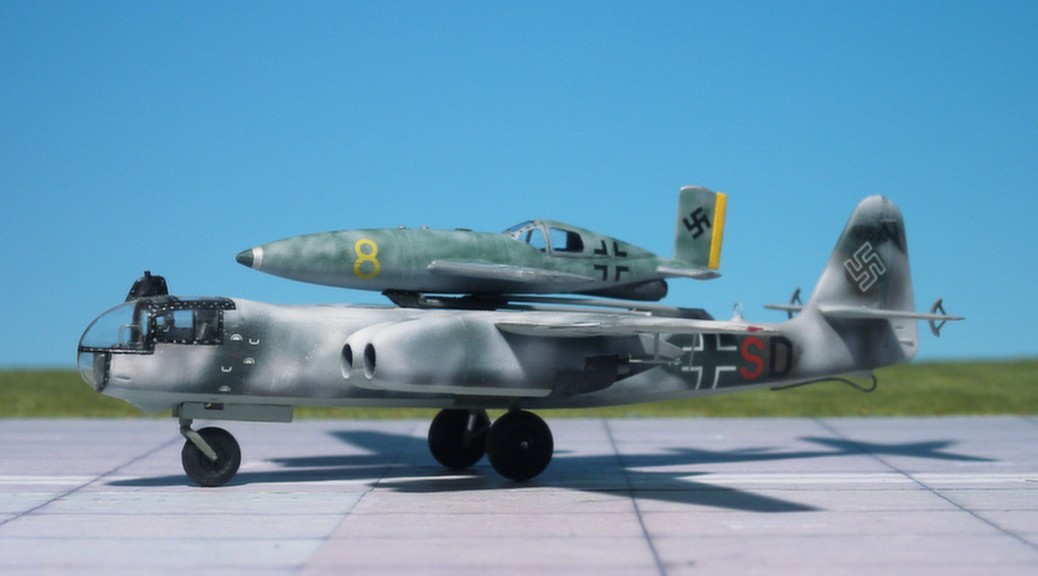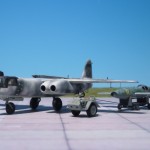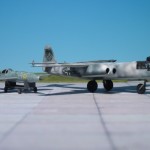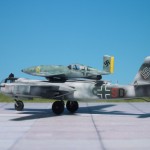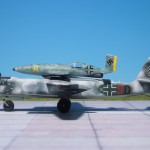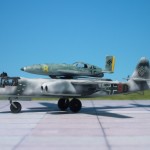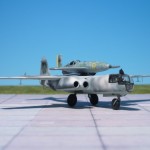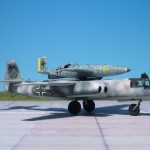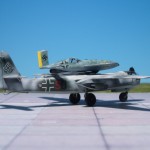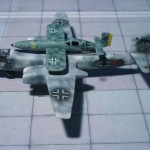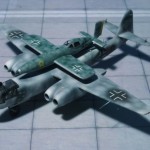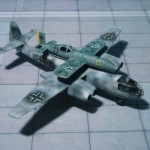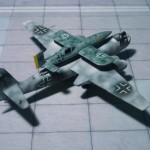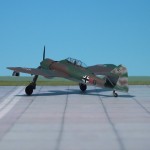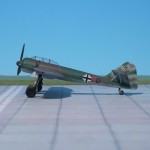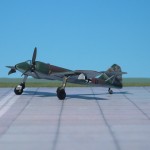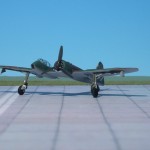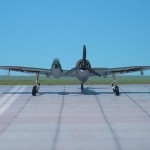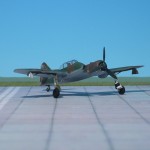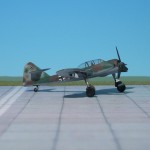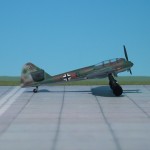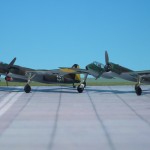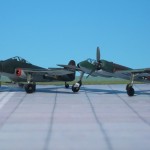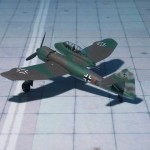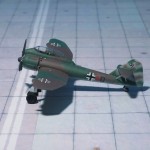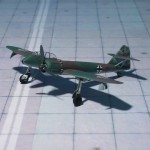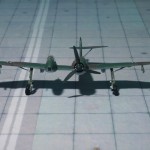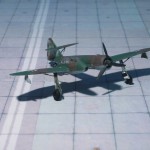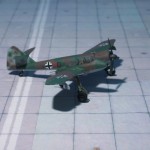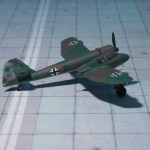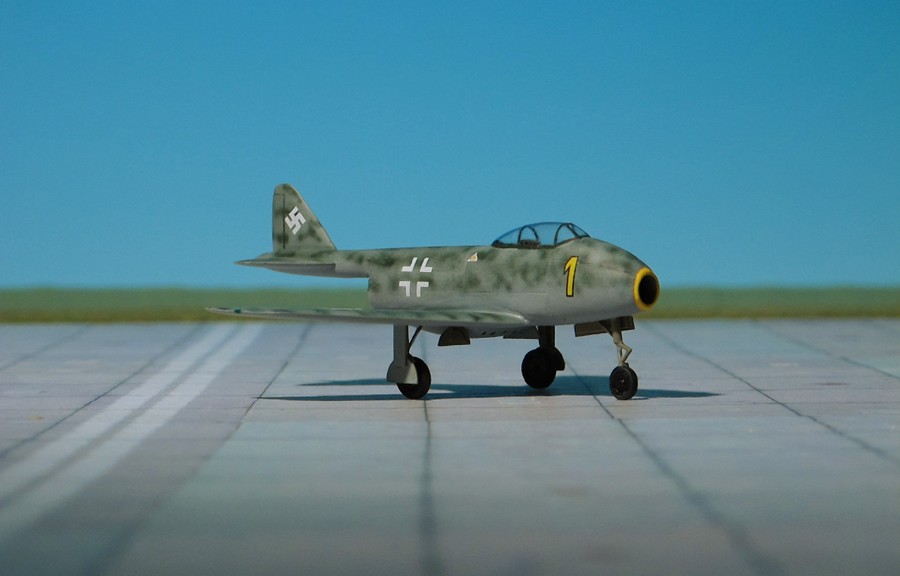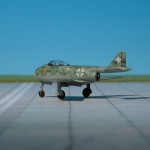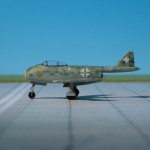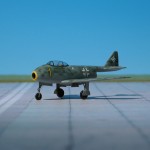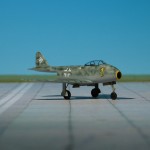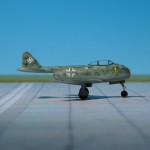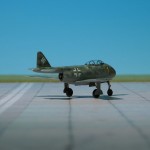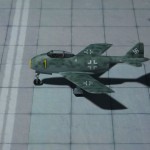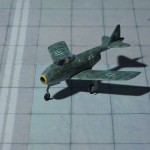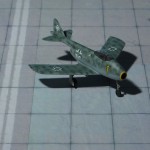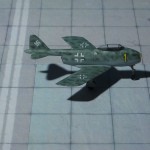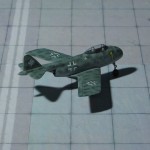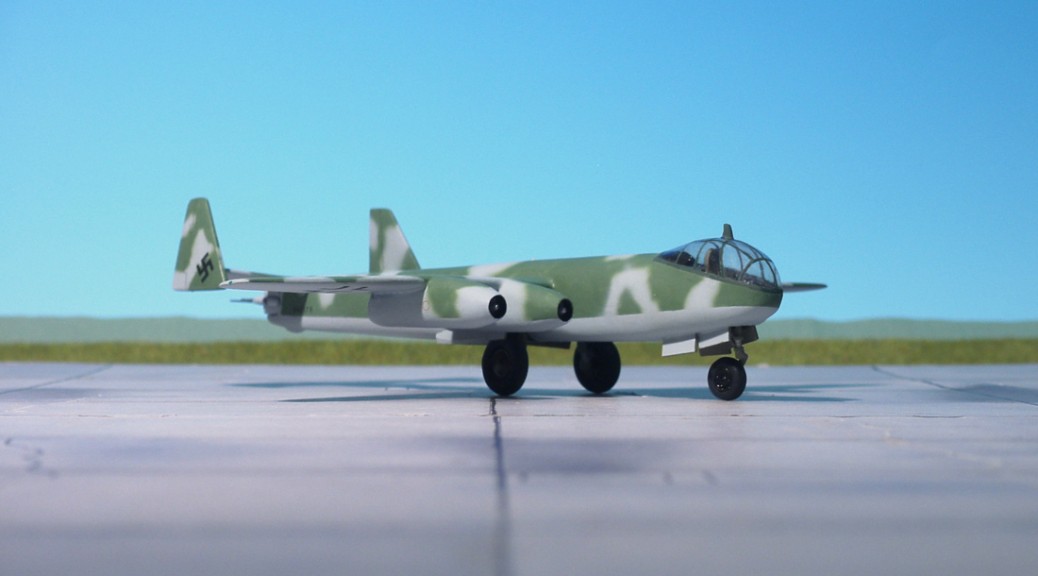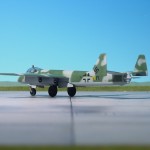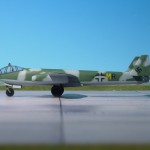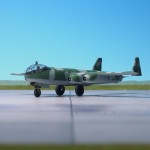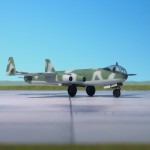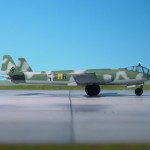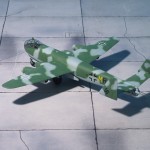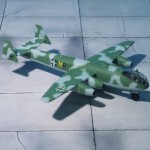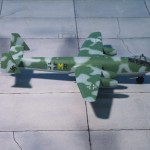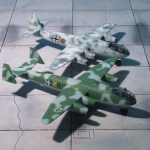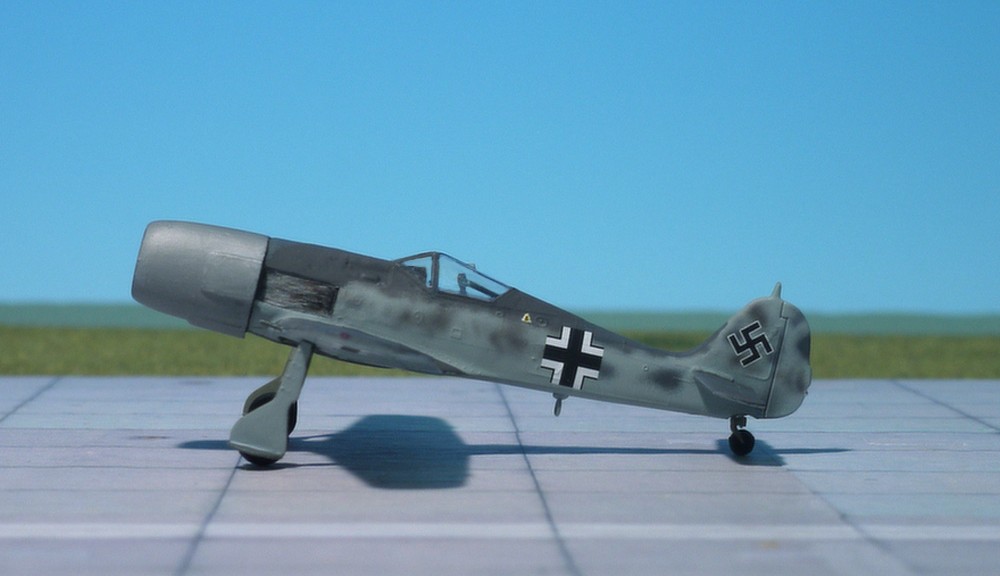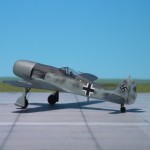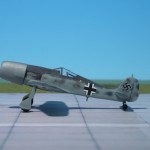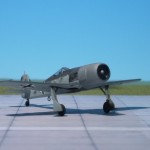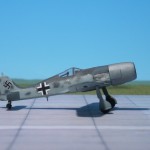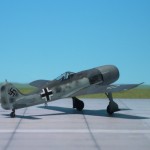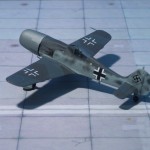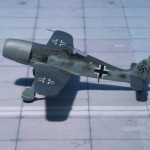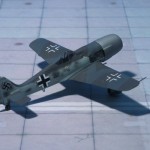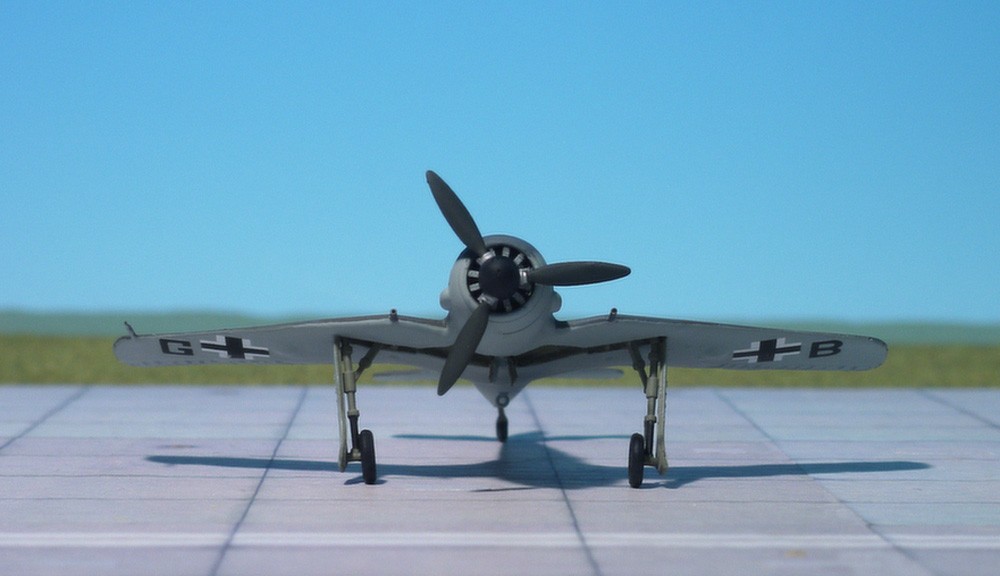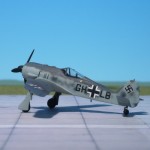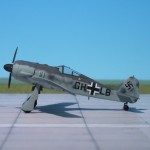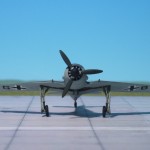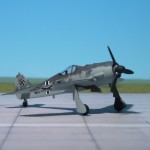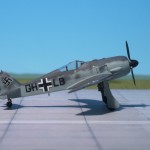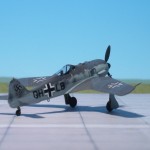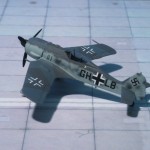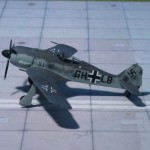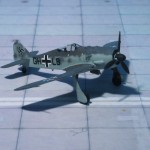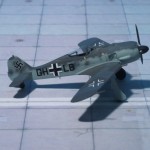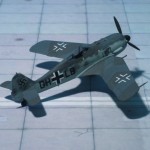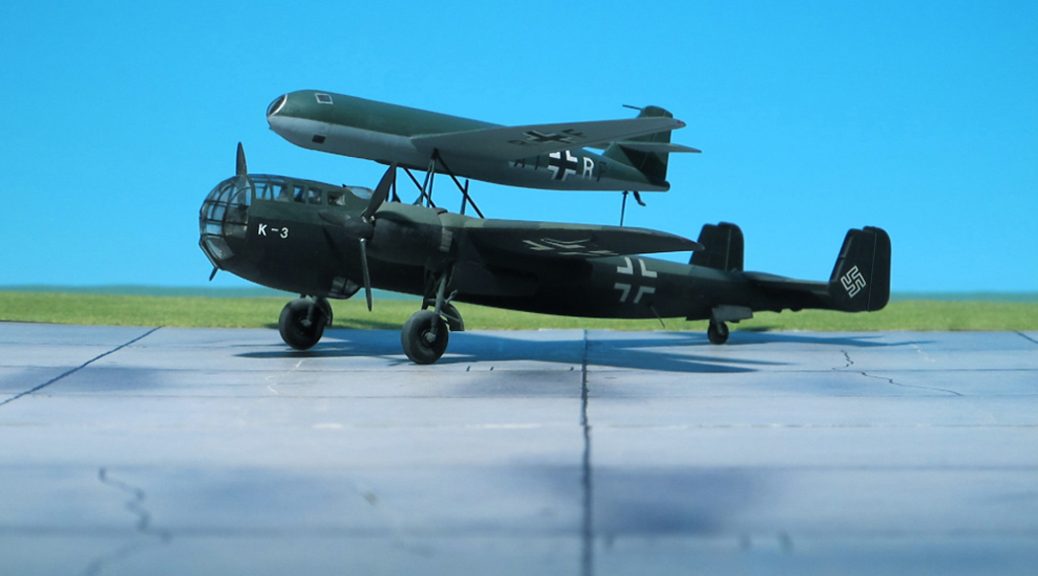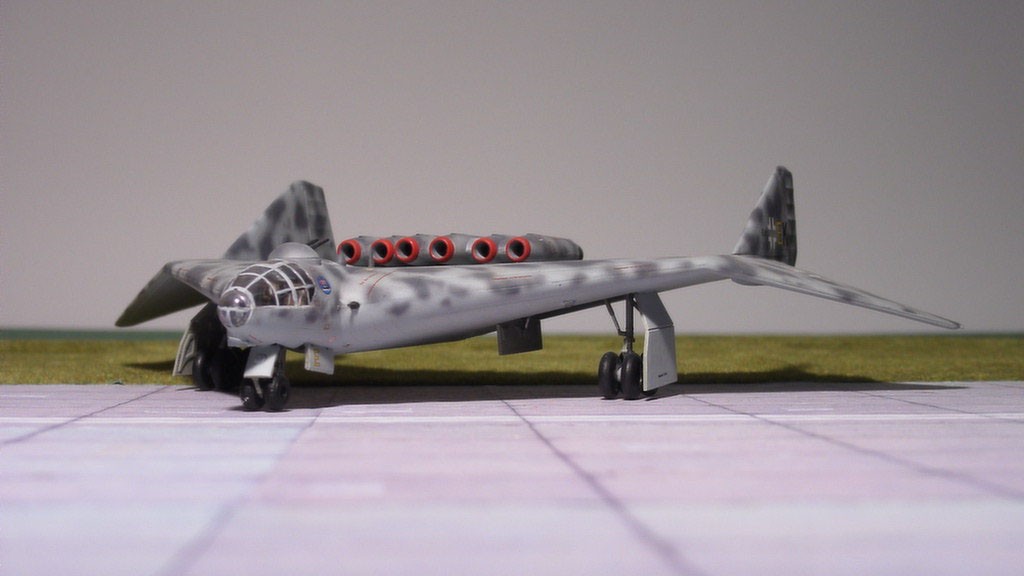Category Archives: Projects
Projects
Blohm & Voss Bv. 237 (Unicraft, Resin)
TYPE: Dive bomber, ground attack fighter. Project
ACCOMMODATION: Pilot only
POWER PLANT: One BMW 801D radial engine, rated at 1,700 hp
PERFORMANCE: 360 mph
COMMENT: The Blohm & Voss Bv 237 was a proposed dive bomber with an unusual asymmetric design based on the Blohm & Voss Bv 141, as well as other projects like Bv P.194 and Bv P.204. In 1942 the Luftwaffe was interested in replacing the venerable but ageing Junkers Ju 87, and Dr. Richard Vogt’s design team at Blohm & Voss began work on project P 177. The dive bomber version would have had a one man crew and was heavily armed with cannon, machine gun and bombs. A two seat ground attack version was also proposed. A final B-1 type was to incorporate a Junkers Jumo 004B turbojet engine in a third nacelle slung underneath the wing, between the piston engine and the cockpit. In early 1943 a production order was issued for the P 177 now called the Bv 237. In the summer that year the RLM ordered all developmental work stopped. Work continued later and it was determined that construction could begin in mid 1945, but plans for a pre-production A-0 series were abandoned, leaving the project at the pre-production stage near the end of 1944, with only a wooden mock-up completed (Ref.: 23).
Blohm & Voss Bv P.211.01 (Unicraft, Resin)
TYPE: Interceptor fighter. Project
ACCOMMODATION: Pilot only
POWER PLANT: BMW 003A-1 turbojet, rated at 800 kp
PERFORMANCE: 536 mph at 26,250 ft (estimated)
COMMENT: Design of an interceptor fighter from mid 1944, forerunner of the Bv P.211.02, that was submitted for the “Volksjäger” (Peoples fighter) competition. Winner was the Heinkel He 162 “Spatz”.
Heinkel He 343B-1 (Airmodel, Vacu)
TYPE: Heavy fighter, medium bomber. Project.
ACCOMMODATION: Pilot and observer
POWER PLANT: Four Heinkel/Hirth HeS 011 turbojet engines, rated at 1,300 kp each
PERFORMANCE: 565 mph
COMMENT: The Heinkel He 343 was a four-engine jet bomber project by Heinkel Aircraft Company in the last years of WW II. In 1944 a total of 20 of these aircraft were ordered. For shortening the development time and for re-use of existing parts, its general design was envisioned along the lines of an enlarged Arado Ar 234 “Blitz” (“Lightning”). For a choice of engines, the Junkers Jumo 004 and the Heinkel HeS 011 were planned. The DFS (Deutsche Forschungsinstitut für Segelflug), (German Research Institute for Gliding Flight) was involved in the project and created the project known as P.1068. By the end of 1944, work was nearly finished by the Heinkel engineers, with parts for the He 343 prototype aircraft either under construction or in a finished state, when the order was cancelled due to the “Jägernotprogramm (Emergency Fighter Program). Four versions were planned: the He 343A-1 bomber, the He 343A-2 reconnaissance aircraft, and the He 343A-3 and He 343B-1 Zerstörer (“Destroyer”) heavy fighters.
The Heinkel He 343B-1 differed from the He 343A-1 bomber version especially in the tail unit. Instead of the two fixed rear firing guns in the fuselage rear, a FHL 151Z remote controlled turret was installed in the extreme rear fuselage. This necessitated a tail redesign to a twin fin and rudder set up. A rear facing periscope in the cockpit was used to aim the FHL 151Z turret, which was armed with two MG 151 20mm cannon. The twin tail would have made for extended flight testing, plus would have added additional weight and drag (Ref.: 17, 24).
Focke Wulf Fw 190TL (Unicraft, Resin, Parts from Airfix)
TYPE: Fighter project with turbojet engine
ACCOMMODATION: Pilot only
POWER PLANT: One Focke-Wulf T.1 radial turbojet engine, rated at 600 kp
PERFORMANCE: 515 mph at 29.530 ft
COMMENT: The Focke-Wulf 190TL was one of the earliest jet projects of the Focke-Wulf Company. First design studies began in 1941 on the basis of a standard Focke-Wulf Fw 190 fighter then in production. The original BMW 803 radial piston engine was replaced by a Focke-Wulf T. 1 turbojet engine. This comprised a two-stage radial compressor, an annular combustion chamber and a single-stage turbine. The exhaust passed through an annular outlet streaming around the surface of the fuselage. Further work on this project was cancelled in 1942.
Focke Wulf Fw 190A-4 Falcon-wing (Unicraft, Resin, Parts from Airfix)
DFS 228A-0 on Dornier Do 217K-1 (Italeri, Huma)
TYPE: Rocket-powered high-altitude reconnaissance aircraft. Project
ACCOMMODATION: Pilot only in prone position in pressurized cabin
POWER PLANT: One Walter HWK 109-509 bi-fuel liquid rocket engine, rated at 1,650 kp at 40,000 ft
PERFORMANCE: 559 mph (estimated)
COMMENT: The rocket-powered high-altitude reconnaissance aircraft DFS 228 (Deutsche Forschungsanstalt für Segelflug, German Institute for Sailplane Flight) was designed to climb to altitudes up to 75,459 ft and was than – due to this extreme height – far beyond the operational limits of any other aircraft at its time.
The DFS 228 design was a mid-wing monoplane, using wood whenever possible, with the exception of the pressurized nose compartment, which was an all-metal construction. Fins were plywood covered, ailerons and rudder fabric covered. A landing skid was housed in the center fuselage and could be extended for landing. For take-off a “Mistel” (Mistletoe) pick a pack configuration with landing skids retracted on a carrier Dornier Do 217K was proposed. Equipped with Zeiss infrared camera the aircraft was to be used for powerless reconnaissance missions. To perform these missions the DFS 228 was carried to an altitude of 33,000 ft. After ignition of the Walter HWK 109-509 liquid-fuel rocket engine and separation from its carrier the aircraft was able to reach its service ceiling of app. 75,000 ft within five minutes. The actual reconnaissance mission was done in powerless flight. Descending to its release height of 33,000 ft the aircraft could cover a distance of app. 466 miles and another 218 miles until landing. In case of emergency the pressurized nose compartment, equipped with all life-supporting systems, could be jettisoned by means of four explosive bolts, the module descend to an altitude at which the pilot could survive without oxygen supply. The pilot was ejected through the front windscreen and at the same time a parachute was deployed to bring the pilot safely to the ground.
By the end of WW II one prototype had been built (DFS 228 V1) and flown but only as glider. A second prototype DFS 228 V2 was in advanced stage. However, flight testing was only performed in a non-powered glide and a height of 33,000 ft resp.75,000 ft was not exceeded (Ref 17, 24).
